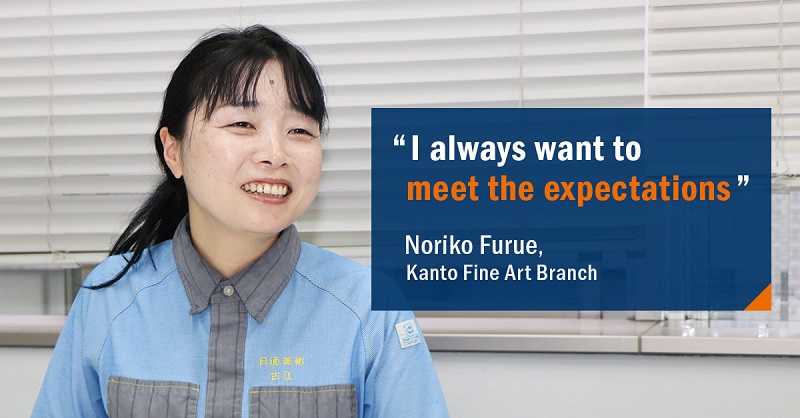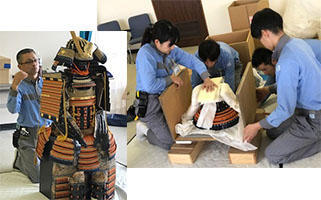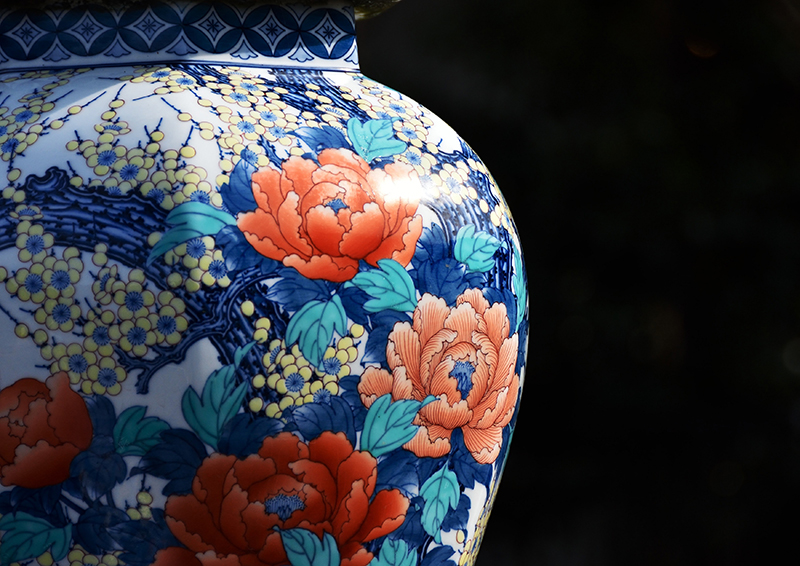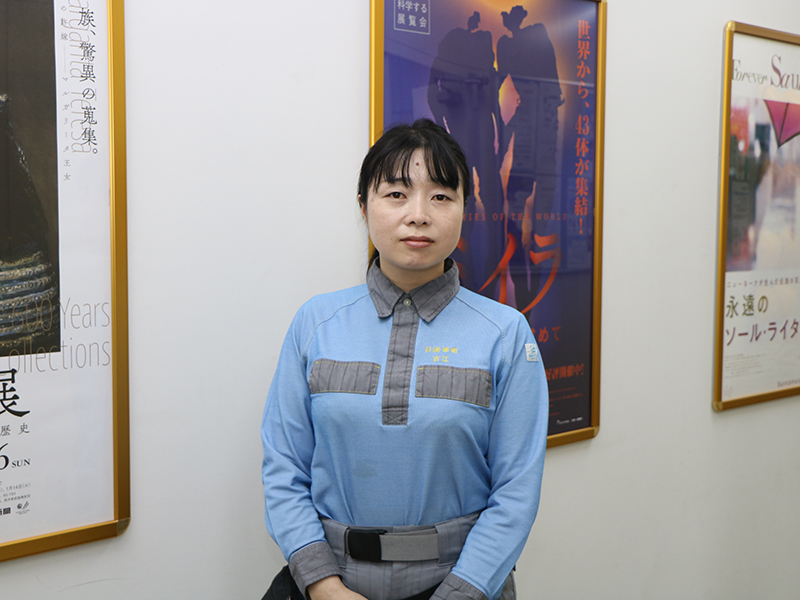Art Transportation supported by Tradition and Inquiring Mind
April 28, 2020
Fine-art transport involves the handling of one-of-a-kind treasures, and thus requires skills and knowledge of a level high enough to merit the trust of customers. In Japan, A benchmark in this regard is the certification system for Skilled Workers for Wrapping and Transportation of Works of Art of the Japanese Association of Museums. As of April 2020, there are only 24 people with Grade 1 of this certification in Japan, and 11 of them are employees of Nippon Express. Last year, Noriko Furue of the Nippon Express became the first woman in Japan to acquire Grade 1. We spoke with Ms. Furue regarding topics such as her past experience and the appealing aspects of fine-art transport.

- ― What is the content of the work that you oversee?
- In the case of fine-art transport, most of the time a team of several people is put together. First of all, we have a preliminary inspection of the art, and then puts together a transport plan based on the data from the inspection related to numbers of pieces, the characteristics and size of the art, and so on. The work doesn't begin until exhaustive preparations have been made, including readying packing materials and the like, for example, constructing wooden boxes. As work supervisor, I oversee the progress of tasks while coordinating with the customer. In the case of exhibitions, the work is done in collaboration with the exhibition venue, so I make numerous business trips both within Japan and overseas. But the situation varies with regard to my work location and team members. So, the staff members on my team differ depending on where the traveling exhibition or other event is held. Perhaps because of this kind of work environment, staff members involved in fine-art transport seem to all have a strong sense of camaraderie and are good at teamwork. So, because I work at different locations throughout the organization, I get to learn a lot and I find the work stimulating.
- ― What do you focus on in the course of your work?
-
For technical employees involved in specialized transport, you are usually at the same workplace, and the team members at that workplace mostly stay the same. Also, transfers are rare for senior employees of art museums, so you tend to work with them over the long term. This is precisely why I place a lot of importance on maintaining good communication with people both inside and outside of our company, because I want our work to always proceed in a positive atmosphere.

- ― What do you focus on when giving guidance to junior colleagues?
- When I train junior colleagues, I think about what my situation was like at the same stage, and try to give guidance taking the learner's perspective into consideration. At the same time, it is important to give guidance that is in line with the unique qualities of each individual. As you might expect, when learning jobs, on-the-job learning seems to be the best approach. Of course, a prerequisite for this is acquiring basic skills and knowledge through group training and so on, and there are no shortcuts to improving. Junior colleagues need to watch their senior colleagues perform tasks, and then try to perform the tasks themselves. By keeping on performing those tasks, they gradually get to master them, while incorporating their own creative ideas. Seeing junior colleagues grow makes me very happy and gives me encouragement. Furthermore, if you always have the same team members, you tend to develop a fixed way of thinking, so having junior employees join our company brings a sense of freshness to the workplace and sometimes leads to unexpected new discoveries.
- ― Looking at your experiences thus far, what projects have left a lasting impression on you?
-
One job that made me particularly happy was being team leader for a traveling exhibition for the first time. Also, I'll never forget the time I went to Los Angeles for my first overseas business trip. I still recall how kind the employees at that location were to me. Recently, I went to Greece for work related to an exhibition of Japanese ceramics and crafts. The venue was an art museum that had just opened, and it was the first time Japanese fine art had been transported to Greece, so was an especially valuable experience. I feel how kind so many of the local people in every country are to overseas visitors. So, as a way of expressing my gratitude to the people who have been kind to me overseas, I give a warm welcome to all of the curators who visit Japan from abroad.

- ― What do you find thrilling about doing fine-art transport work?
- Being able to closely observe and actually touch fine art that I had previously only been able to look at is a major source of motivation for me. Also, the work is especially interesting because every item that I deal with is different. And since every item is different, there is no single correct way of performing the work. In addition, it is great how all of the team members work together to try to find the best ways taking a trial-and-error approach, and this way our skills get better and better.
- ― What are your aspirations for the future?
-
I always want to meet the expectations of customers and everyone else in the course of my job. In particular, the veteran employees, who are older and much more experienced than I am, are still working on honing their skills, and are constantly searching for optimal approaches to work while accommodating new information. I truly respect their mindset as professionals who not only uphold traditions but also teach people about the importance of taking on new challenges, and I hope to become more like them in the future.
